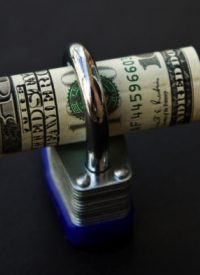
Last month, Senator Bob Corker (R-Tenn.) pushed back against the Obama administration’s plans to create a “standalone” Consumer Financial Protection Agency, and some Washington-watchers held their breath to see if Corker would hold his ground.
The administration wants the new agency to “have independent leadership appointed by the President and confirmed by the Senate with an independent budget … and have the ability to set clear rules governing consumer financial services and to enforce those rules,” according to Martin Crutsinger writing for the Associated Press. “This approach will strengthen consumer choice and innovation and reinforce, rather than undermine, safety and soundness,” a Treasury statement said. The agency would have the power to put mandatory limits on bank size and trading activities, and to enforce such limits by its own enforcement powers.
Such combining of executive, legislative, and judicial powers is the opposite of what the Founders envisioned when it deliberately and thoughtfully created the three separate federal branches of government under the Constitution. Further, such “separation of powers” between the states and the federal government, and limits placed in Article I, Section 8, along with the Bill of Rights, sought further to prevent exactly this kind of abuse and resultant statutory dictatorship.
President Obama has no such misgivings. An administration official said, “The President is strongly committed to an effective and independent consumer agency, with real accountability for setting and enforcing clear rules of the road in the financial services marketplace.” (Emphasis added.)
Just one month later, Corker decided to go along with a modified version of plans for the agency, concerning himself not with those unconstitutional powers to be granted, but to where the agency was going to be physically located — inside the Federal Reserve, inside the FDIC, or inside the Treasury Department! He admitted, “This is awkward, but I really believe that if we cannot solve financial regulation in a bipartisan way, there’s nothing we can solve.” He said that working with Senator Christopher Dodd (D-Conn.) who is carrying the water for the Obama administration with this bill, was “one of the toughest decisions I’ve made.”
Of course, Treasury Secretary Timothy Geithner got into the act as well, stating that the agency would have the power to prevent commercial banks from carrying out high-risk trades, and keep any financial firms from holding more than 10 percent of the entire financial industry’s liabilities. This way, the Treasury Secretary said, firms couldn’t become “too large to fail,” and would therefore allegedly preserve taxpayer dollars from being used for bailouts in the future.
Some light resistance to the measure came from industry groups who felt that this would be one more agency that would subject financial institutions to another layer of regulation outside the current banking agencies already regulating the industry. Edward Yingling, president of the American Bankers Association, told the AP that the “bill would produce conflicts among [existing] regulators, undermine the state-chartered banking system and impose extensive new regulatory burdens on those banks that had nothing to do with creating the financial crisis.” But not a word was said about its constitutionality. In fact, one Democratic aide said, “Democrats should go to the floor with a strong bill that attacks the root causes of the financial crisis and ensures that Wall Street can never do it again.” (Emphasis added.)
Those “root causes” have been examined in detail and they all lead back to government intervention in the financial markets, especially and specifically to the Federal Reserve System itself. In his book Meltdown, Thomas Woods concludes that “the current crisis was caused not by the free market but by the government’s intervention in the market. [Emphasis added.] The Fed’s policy of intervening in the economy to push interest rates lower than the market would have set them was the single greatest contributor to the crisis that continues to unfold before us.” And, in its review of the book, the Ludwig von Mises Institute said that “all attempts to ‘fix’ the problem are like forcing the patient to swallow more of the poison from which he currently suffers.”
By creating an agency with power sufficient to limit the size of a financial institution, the “moral hazard” of becoming so large that the government will have to bail it out if it makes mistakes is neatly avoided. This moral hazard was a large part of the root cause of the crisis, as exemplified by the FDIC’s insurance umbrella. Risky subprime mortgages that wouldn’t have survived scrutiny in a free market were actually encouraged because of that umbrella backing up bad decisions with federal taxpayer guarantees.
Charles Scaliger confirmed this in a recent article:
Most of the current mess stemmed from too much, and not too little, government interference in the workings of the free market, including the perverse lending practices encouraged by the Community Reinvestment Act and government subsidizing of the mortgage industry. Curtailing the powers of the Federal Reserve is certainly a worthy goal, but transferring those powers to yet another cluster of constitutionally illegitimate federal agencies amounts to substituting one bad medicine for another.
He goes on to ask, “Why should the Federal government do anything at all? What possible constitutional basis can there be for effecting a takeover of the entire financial sector? Yet again the federal government — with the full complaisance of most Senators [including “respectable” Republicans like Corker] — is trying to use the power of the state to solve what only the private sector and the free markets can accomplish, and ignoring constitutional limits” along the way.
With continued “complaisance” on both sides of the aisle, both Democrats and Republicans, the financial industry and eventually the entire economy will suffer under the dictates of “independent” regulatory agencies, while the free market which, if left alone, would operate effectively in solving the “root causes” of the current Great Recession.



